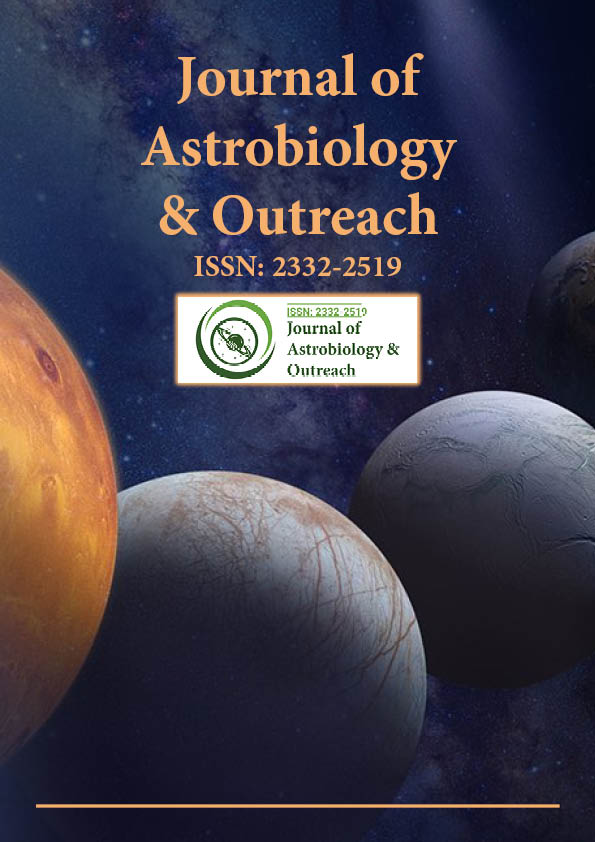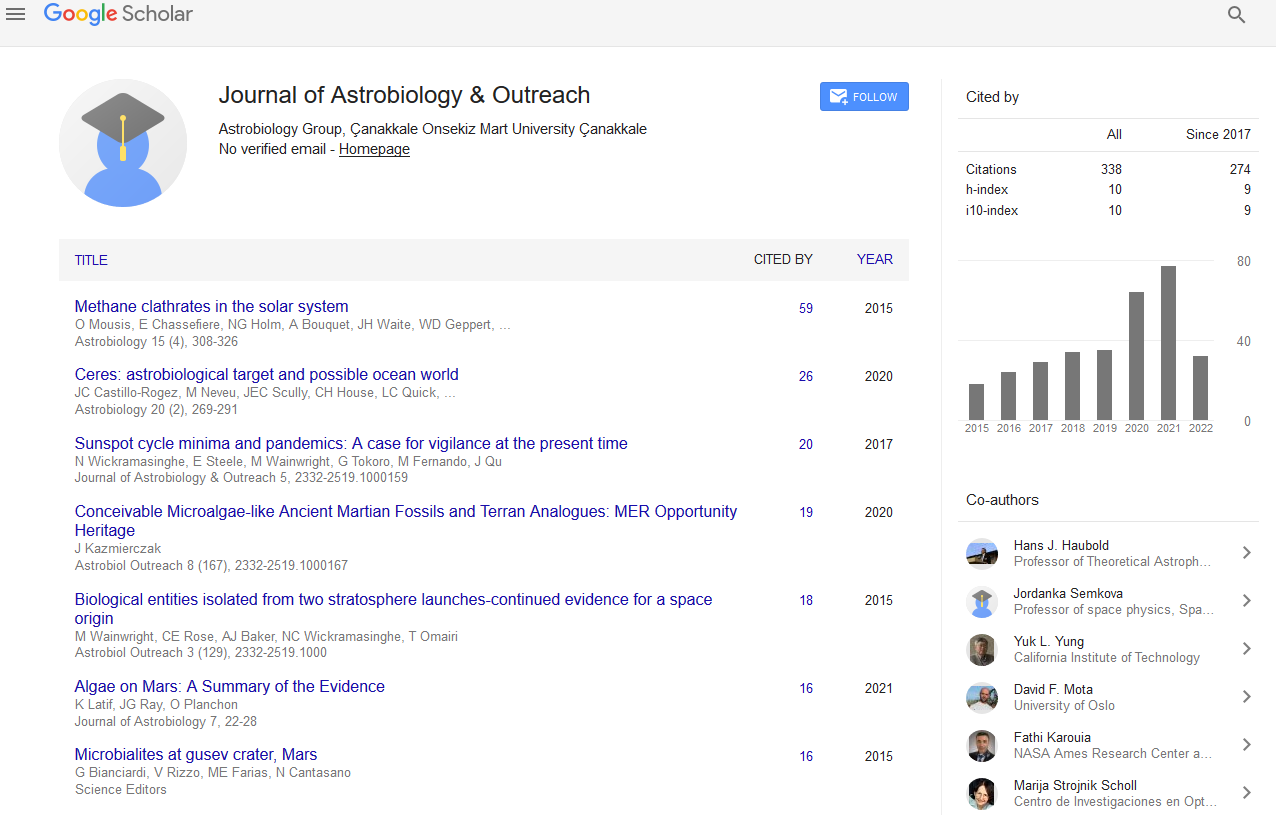Indexed In
- Open J Gate
- Academic Keys
- JournalTOCs
- RefSeek
- Hamdard University
- EBSCO A-Z
- OCLC- WorldCat
- Google Scholar
Useful Links
Share This Page
Journal Flyer

Open Access Journals
- Agri and Aquaculture
- Biochemistry
- Bioinformatics & Systems Biology
- Business & Management
- Chemistry
- Clinical Sciences
- Engineering
- Food & Nutrition
- General Science
- Genetics & Molecular Biology
- Immunology & Microbiology
- Medical Sciences
- Neuroscience & Psychology
- Nursing & Health Care
- Pharmaceutical Sciences
Commentary - (2025) Volume 13, Issue 2
Identified the Cosmic Mysteries: A Journey into the Depths of Astrophysics
Robert Wood*Received: 16-Dec-2023, Manuscript No. JAO-23-24464; Editor assigned: 19-Dec-2023, Pre QC No. JAO-23-24464; Reviewed: 02-Jan-2025, QC No. JAO-23-24464; Revised: 22-Dec-2025, Manuscript No. JAO-23-24464; Published: 29-Jan-2025, DOI: 10.35248/2332-2519.25.13.379
Description
Astrophysics, the branch of astronomy that seeks to understand the fundamental principles governing the universe, is a captivating field that explores into the mysteries of celestial bodies and cosmic phenomena. This scientific discipline combines physics and astronomy to unravel the intricacies of the cosmos, from the smallest particles to the vast expanses of space. Through the lens of astrophysics, scientists strive to comprehend the nature of dark matter, the evolution of galaxies, and the origin of the universe itself.
The astrophysics lies the fascinating process of stellar birth. Stars, the celestial beacons that illuminate the night sky, emerge from vast molecular clouds composed of gas and dust. Gravitational forces initiate the collapse of these clouds, leading to the formation of protostars. As these protostars gather mass, nuclear fusion ignites in their cores, marking the birth of a star. Astrophysicists study this process to gain insights into the lifecycle of stars and the elements they forge during their existence.
Galactic dynamics and dark matter
The study of galaxies, vast cosmic islands containing billions of stars, forms a essential aspect of astrophysics. Observations have revealed that galaxies rotate at speeds inconsistent with the visible mass they contain. This discrepancy has given rise to the enigmatic concept of dark matter. Astrophysicists postulate the existence of this elusive substance, which does not emit, absorb, or reflect light, to account for the unexplained gravitational forces shaping the dynamics of galaxies. Understanding dark matter remains one of the foremost experiments in astrophysics.
Black holes and gravitational waves
In the cosmic theater, black holes take center stage as one of the most intriguing phenomena. These gravitational behemoths, formed from the remnants of massive stars, exert such intense gravitational pull that not even light can escape their grasp. The recent detection of gravitational waves, flows in the fabric of space-time caused by the acceleration of massive objects like merging black holes, has opened a different window for astrophysical exploration. By studying these waves, scientists can glean unprecedented insights into the cataclysmic events occurring in the distant reaches of the universe.
Cosmic microwave background and the early universe
The echoes of the Big Bang, the explosive event that gave birth to the universe, reverberate in the form of the Cosmic Microwave Background (CMB). Astrophysicists analyze the CMB to unravel the conditions prevailing in the early universe and to understand the formation of cosmic structures. Through precise measurements and observations, scientists seek to uncover the nature of the primordial universe and the forces that shaped its evolution.
Exoplanets and the search for extraterrestrial life
Astrophysics extends beyond the confines of solar system to search the myriad exoplanets scattered throughout the galaxy. The discovery of exoplanets, planets orbiting stars beyond our sun, has ignited hope for finding extraterrestrial life. Astrophysicists employ advanced techniques, such as the transit method and radial velocity measurements, to identify and characterize these distant worlds. Astrophysics, a captivating synthesis of astronomy and physics, continues to push the boundaries of human knowledge about the cosmos. From the birth of stars to the enigma of dark matter, from the gravitational dances of black holes to the echoes of the Big Bang, astrophysicists strive to unravel the profound mysteries that permeate the universe.
Citation: Wood R (2025) Identified the Cosmic Mysteries: A Journey into the Depths of Astrophysics. J Astrobiol Outreach. 13:379.
Copyright: © 2025 Wood R. This is an open-access article distributed under the terms of the Creative Commons Attribution License, which permits unrestricted use, distribution, and reproduction in any medium, provided the original author and source are credited

